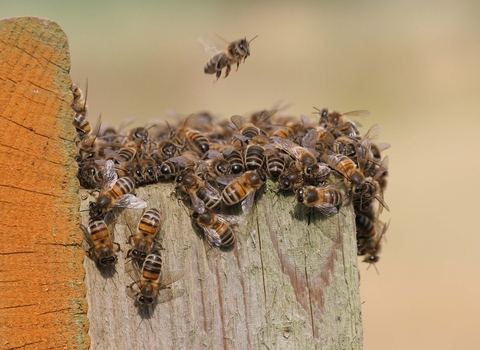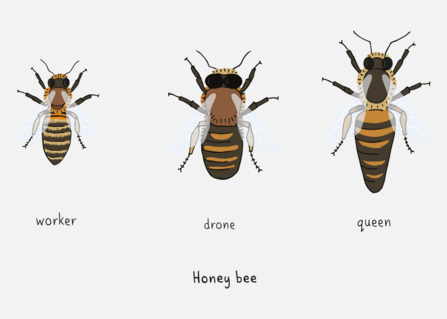
Honey Bee swarm ©Margaret Holland

Honey Bee ©Nick Upton/2020VISION

Honey Bees ©Chris Gomersall/2020VISION
Honey bee
Honeybees are famous for the honey they produce! These easily recognisable little bees are hard workers, living in large hives made of wax honeycombs.
Scientific name
Apis melliferaWhen to see
March to SeptemberSpecies information
Category
Statistics
Length: 1.2cmCommon.
About
Probably the best known bee, the honeybee's honey has been used by humans for thousands of years. In the wild they live in wooded areas in large hives made of wax honeycombs. The queen lays eggs whilst the workers care for the young, almost like a giant bee nursery! Every year a new queen will either take the place of her mother, or she will leave to start a colony of her own.How to identify
The familiar black-and-gold honey bee is almost unmistakeable. There are several species of hoverfly that look similar, but they have much larger eyes.Distribution
Widespread.Did you know?
A single bee hive may contain as many as 50,000 individuals. In winter, the hive goes into survival mode: the drones are expelled, the workers huddle together to keep warm, and the larvae are fed on stores of pollen and honey. In spring, a new generation of bees emerges.
Illustration by Corinne Welch
